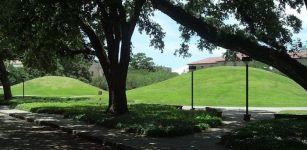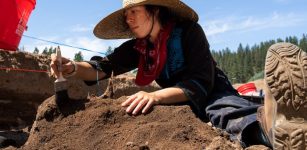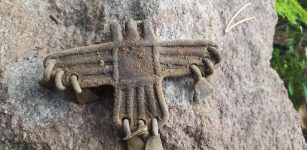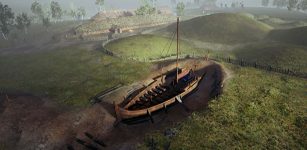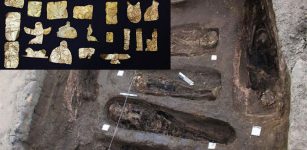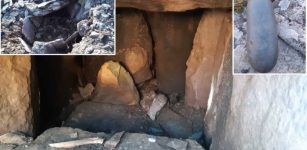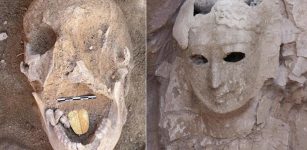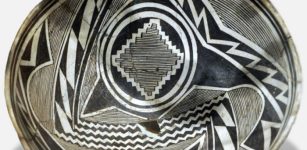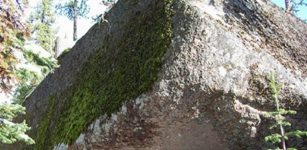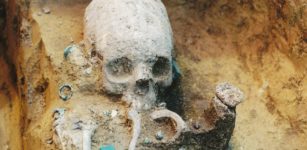Mystery Of Ancient Roman Concrete That Still Stands Strong – Has A 2,000-Year-Old Engineering Puzzle Been Solved?
AncientPages.com - For 2,000 years engineers have tried to figure out what ancient Romans put in to their concrete that made their piers survive the continuous battering of the ocean waves.
Modern concrete seawalls embedded with steel crumble within decades, but ancient water-based structures became stronger over time. So how did the ancient Romans build these remarkable structures?
Samples from this Ancient Roman pier, Portus Cosanus in Orbetello, Italy, were studied with X-rays CREDIT: J.P. OLESON
Massive marine structures protected harbors from the open sea and served as extensive anchorages for ships and warehouses.
Scientists now think they have finally cracked Romans’ secret of durable marine concrete. If this is the case, we could use a similar technology to build modern sea defenses which withstand time and tide.
According to Professor Marie Jackson, a geology and geophysics research professor at the University of Utah who studied these intriguing ancient Roman buildings, our ancestors used a mix of volcanic ash, lime (calcium oxide), seawater and lumps of volcanic rock to hold together the structures.
See also:
Advanced Ancient Technology – Talos A Greek Robot Created By The God Of The Forge
Telangana And Great Ancient Iron Masterwork Of Skilled Blacksmiths Of India
Ancient Secrets Of The Damascus Steel – Legendary Metal Used By Crusaders And Other Warriors
The study of the ancient Roman pier, Portus Cosanus in Orbetello, Italy shows that when seawater comes in contact with volcanic material in the cement, new minerals are created reinforce the concrete. The combination of ash, water, and lime produces what is called a pozzolanic reaction, named after the city of Pozzuoli in the Bay of Naples, triggering the formation of crystals in the gaps of the mixture as it sets.
Roman forum. Image credit: Aifedse
The same reaction happens in nature, and clumps of natural cement called ‘tuffs’ can be found scattered around volcanic areas, which is probably what gave the Romans the idea.
Structures like the Pantheon and Trajan's Markets show the strength the mineralization brings to the concrete, but it was a mystery how structures in the sea survive the constant onslaught of waves.
“They spent a tremendous amount of work [on developing] this – they were very, very intelligent people,” Professor Jackson said.
Professor Jackson and her team have made another discovery. “I went back to the concrete and found abundant tobermorite growing through the fabric of the concrete, often in association with phillipsite [another mineral],” she said.
Modern Portland cement concrete also uses rock aggregate, but with an important difference: the sand and gravel particles are intended to be inert. Any reaction with the cement paste could form gels that expand and crack the concrete.
“This alkali-silica reaction occurs throughout the world and it’s one of the main causes of destruction of Portland cement concrete structures,” Professor Jackson said.
The exact recipe for Roman concrete has been lost.
“Romans were fortunate in the type of rock they had to work with,” Professor Jackson said. “They observed that volcanic ash grew cements to produce the tuff. We don’t have those rocks in a lot of the world, so there would have to be substitutions made.”
Professor Jackson and her team are now working with geological engineers to find a replacement using seawater from San Francisco Bay and volcanic rock from the Western United States.
AncientPages.com




